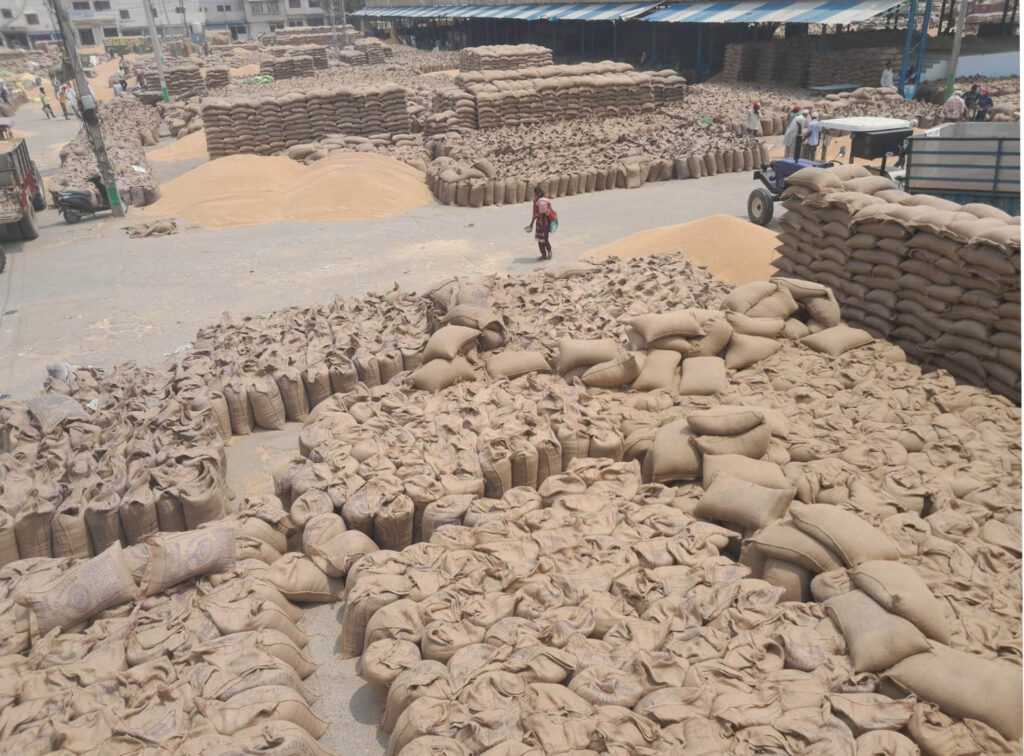Wheat Procurement Reaches New Heights in Guhla
Farmers Asked to Cooperate and Avoid Burning Crop Residue
Guhla-Cheeka, April 17 – As the wheat harvesting season reaches its peak, procurement is moving forward at a rapid pace across the region. SDM Captain Pramesh Singh has taken stock of the ongoing wheat purchase process and issued clear directions to all concerned officials and staff.
According to him, more than 1,10,291 metric tons of wheat have already reached the procurement mandis (markets). The administration is working hard to ensure that farmers face no trouble during the selling process.
Focus on Farmers’ Convenience
To make the procurement process smoother, the SDM emphasized that basic facilities like electricity, clean drinking water, and sanitation must be available in all mandis without any interruption. He directed all officials to maintain these services properly and ensure a clean and supportive environment for farmers.
Importantly, he also advised that no negligence will be tolerated. All officers must stay alert and perform their duties responsibly.
“The farmers are our priority. Their comfort and timely payment are essential,” said SDM Singh.
Procurement Status at a Glance
So far, various agencies in Guhla have collectively procured over 1.10 lakh metric tons of wheat. The following table shows the contribution of each mandi and agency:
| Mandi Name | Procurement Agency | Quantity (Metric Tons) |
|---|---|---|
| Cheeka | HAFED | 34,754 |
| Cheeka | Food & Supply Dept. | 38,167 |
| Balbehra | HAFED | 1,351 |
| Ramthali | HAFED | 10,959 |
| Angaodh | HAFED | 4,174 |
| Kangthali | Food & Supply Dept. | 3,872 |
| Kamhedi | HAFED | 935 |
| Baupur | HAFED | 1,025 |
| Bhusla | Food & Supply Dept. | 4,628 |
| Bhagal | HAFED | 5,687 |
| Arnauli | HAFED | 4,734 |
These numbers reflect the efficiency and preparedness of the agencies involved. Farmers have shown trust in the system, and smooth operations are helping maintain that trust.

Appeal to Stop Crop Burning
Despite the positive progress in procurement, SDM Singh raised concerns about crop residue burning, a harmful practice that some farmers continue to follow after harvesting.
He warned that burning crop remains damages the soil’s fertility, harms the air quality, and poses a serious threat to lives and property.
“Burning stubble not only weakens the soil but also leads to pollution and accidents,” the SDM added.
Teams Monitoring Burning Incidents
To deal with the issue, special monitoring teams have been set up at the village, block, and district levels. These teams are keeping a close watch to prevent any such incidents.
SDM Singh urged the public to cooperate with these teams. He also appealed to farmers to report any fire incidents in nearby fields to the local administration without delay.
“The fight against stubble burning requires collective effort,” said Singh.
Why Crop Residue Burning Is a Concern
Burning leftover crop materials has become a traditional yet dangerous method for clearing fields. Though it saves time, it causes:
- Air pollution, leading to breathing issues
- Loss of essential soil nutrients
- Increased greenhouse gases
- Risk of fire spreading to nearby homes or farms
With modern machinery and government support, alternative methods like mulching or composting are now available.

A Call for Sustainable Farming
As part of broader environmental efforts, the administration is promoting eco-friendly farming practices. This includes:
- Educating farmers about sustainable techniques
- Offering incentives for not burning stubble
- Providing equipment at subsidized rates for residue management
The district administration’s consistent communication with farmers is also helping build awareness. Farmers are slowly shifting toward better solutions with guidance and assistance from local authorities.
Farmers Responding Positively
Several farmers from the region have shown support for the SDM’s appeal. They acknowledge the long-term damage caused by burning and are ready to adopt new practices.
Ramesh, a wheat farmer from Kangthali, shared,
“I used to burn the remains earlier. But now I understand the risks. I am using a rotavator this season instead.”
Such voices of change offer hope and reflect a growing awareness among rural communities.
What Lies Ahead
With over a lakh metric tons of wheat procured and more to come, the next few weeks will be crucial. The administration has assured all-round support, and arrangements have been strengthened in every mandi.
Further, strict measures will continue against stubble burning, ensuring that both agriculture and the environment are safeguarded.
The SDM’s message was clear:
“We must balance productivity with responsibility. Together, we can protect our land and people.”
Conclusion
The current wheat procurement drive in Guhla is a story of well-managed efforts, growing awareness, and community cooperation. With clear instructions, consistent monitoring, and farmer participation, the region is setting a strong example for others to follow.
At the same time, the shift toward sustainable farming methods like avoiding crop residue burning is gaining momentum. This dual focus—on efficiency and environment—is exactly what today’s agriculture needs.
If such efforts continue, the future of farming in the region will not only be prosperous but also greener and safer for all.

















